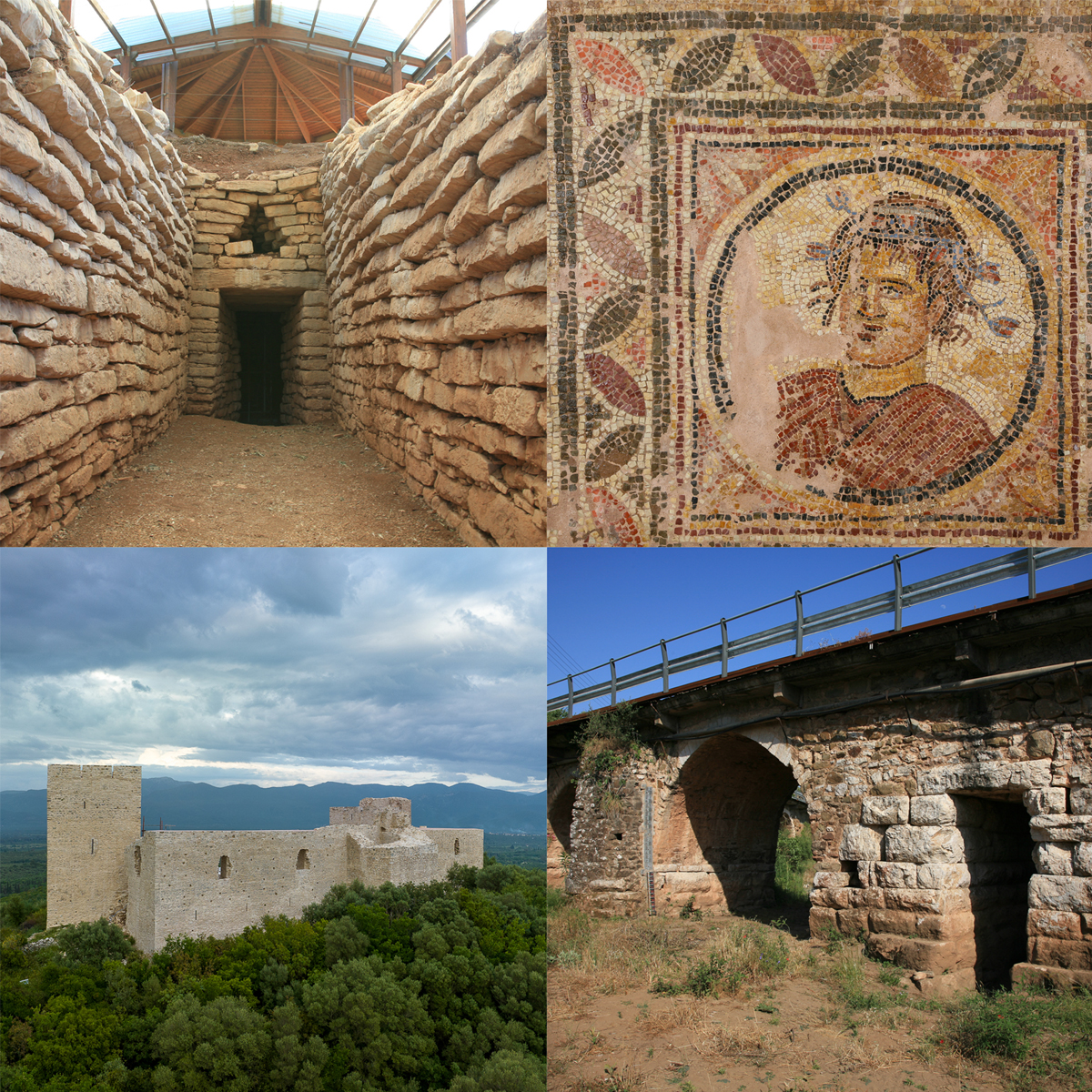One artefact defines the history of a region. An ancient inscription, immured in the church of the village Konstantinoi, near Polichni, describes the ritual of the ancient mysteries of Andania that were re-organised in the 1st century AD. A large number of people, both initiated and uninitiated, were taking part in the grand procession and in the sacred rituals, overseen by eminent citizens of Messene. The region of Dessylas, a frequented pass between Messenia and Arcadia, had in the past been identified as the site of the mysteries of Andania. A luxurious roman building has been found in the southeast of the village, perhaps the house of a rich Greek or a Roman, judging by the quality of its mosaic floors, their polychromy and repertoire. Remains of a fort are located further north, on Elliniko hill. At Kato Melpeia there are traces of prehistoric and classical period habitation and a Late Archaic temple in the mountainous site of Petroula in Ano Melpeia. Excavations by the Swedish archaeologist Mattias Natan Valmin have brought to light the remains of a walled acropolis on the hill at Malthi, overlooking the valley of Soulimas. The site was inhabited into mycenaean times, when a megaroid building was constructed in the centre of the acropolis and two ruler’s tholos tombs at the western foothills. A large number of stone and bone tools and utilitarian pottery was found in the excavations, being part of the every day life of the inhabitants of the prehistoric acropolis. The Mycenaean tholos tombs at Psari and Chalkias, to the north of the valley, reflect the existence of more thriving settlements in the region. Its long history is further attested by remains of a monumental hellenistic fortification on the hill Stylari near Kopanaki. A location of strategic importance, it could control the trade routes from the fertile Soulimas plain to Kyparissia and the Ionian coast. Medieval monuments and Frankish castles, such as the one of Krebeni at Kato Melpeia and Archangel’s castle in Polichni, are indications that life continued here during the byzantine period. Further south, the region of Milas was a strong political centre in antiquity and, later on, an important site for the control of the medieval roads. The homonymous medieval castle is part of a network of smaller castles, founded in strategic locations, in order to control the roads and assert the power of the local Frankish feudal lords.


